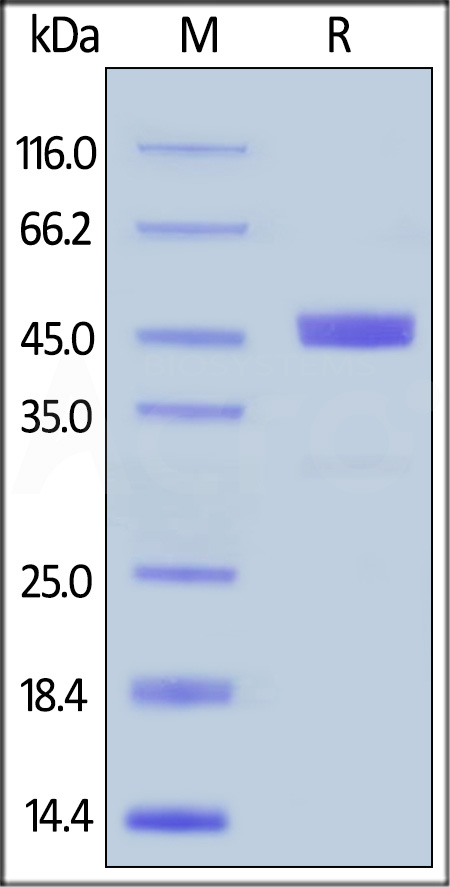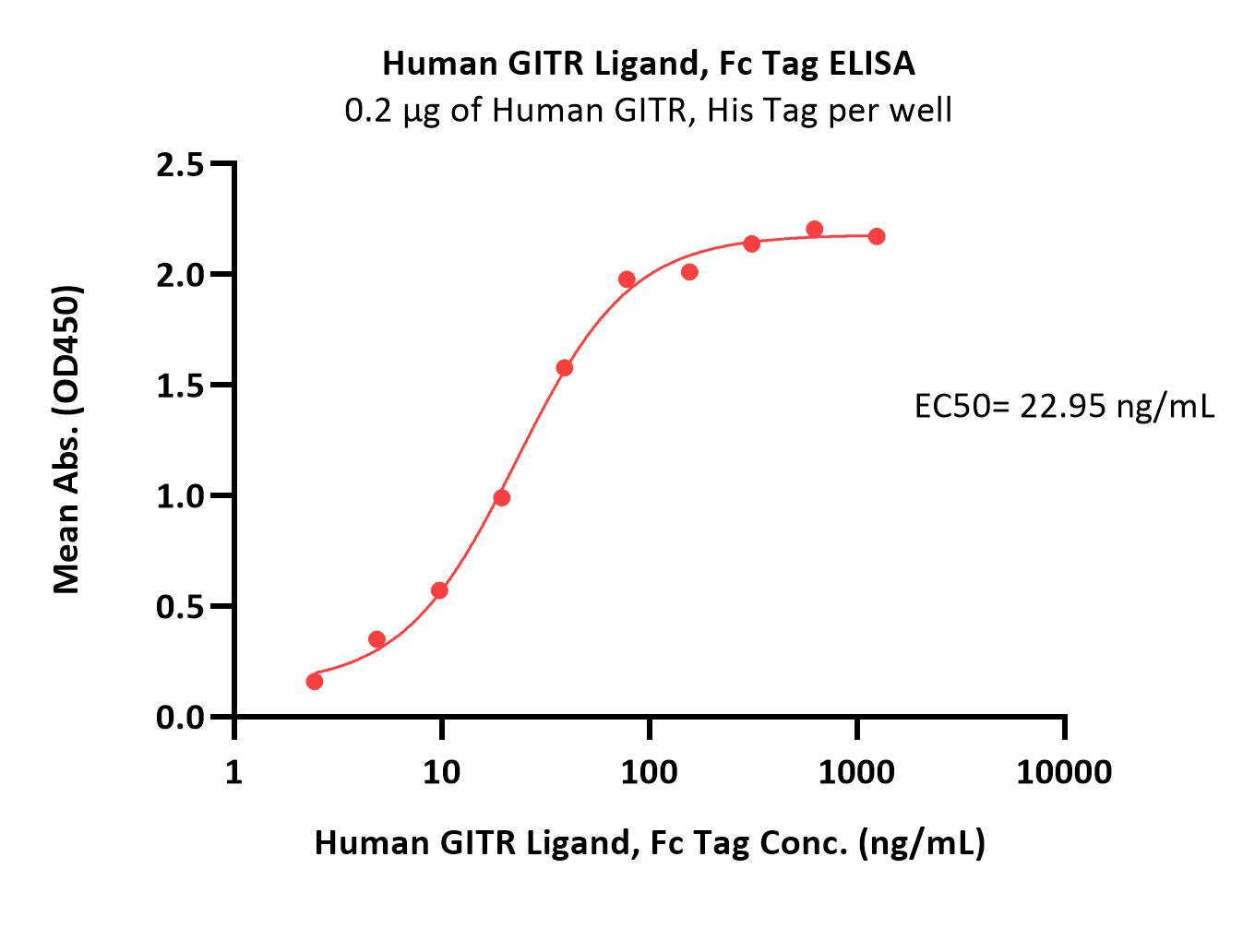GITRL enhances cytotoxicity and persistence of CAR-T cells in cancer therapyTan, Tu, Xiong
et alMol Ther (2025)
Abstract: Chimeric antigen receptor (CAR)-T cell therapy has achieved remarkable clinical success in treating hematological malignancies. However, its clinical efficacy in solid tumors is less satisfactory, partially due to poor in vivo expansion and the limited persistence of CAR-T cells. Here, we demonstrated that the overexpression of GITR ligand enhances the anti-tumor activity of CAR-T cells. Compared to prostate-specific membrane antigen-BB-Z (PSMA-BB-Z) CAR-T, PSMA-BB-Z-GITRL CAR-T cells have much more interferon (IFN)-γ, TNF-α, and interleukin (IL)-9 secretion, a higher proportion of central memory T (TCM) cells and T helper 9 (Th9) cells, less expression of exhaustion markers, and robust proliferation capacity. Consequently, PSMA-BB-Z-GITRL CAR-T cells exhibited more potent anti-tumor activity against established solid tumors in vivo than PSMA-BB-Z CAR-T cells. The results of the in vivo persistence experiment also indicated that PSMA-BB-Z-GITRL CAR-T cells exhibited much more retention in mouse blood, spleen, and tumor tissue than PSMA-BB-Z CAR-T cells 15 days after CAR-T cell therapy. In addition, PSMA-BB-Z-GITRL CAR-T cells produce higher levels of IFN-γ, TNF-α, and IL-9 in mouse blood, exhibiting a higher proportion of TCM cells and a lower proportion of Treg cells compared to PSMA-BB-Z CAR-T cells. Our results demonstrate that the overexpression of GITRL has important implications for improving CAR-T cell-based human solid tumor immunotherapy.Copyright © 2025 The American Society of Gene and Cell Therapy. Published by Elsevier Inc. All rights reserved.
Exploring the Role of GITR/GITRL Signaling: From Liver Disease to Hepatocellular CarcinomaPapadakos, Chatzikalil, Vakadaris
et alCancers (Basel) (2024) 16 (14)
Abstract: Hepatocellular carcinoma (HCC) is the most common primary liver cancer and presents a continuously growing incidence and high mortality rates worldwide. Besides advances in diagnosis and promising results of pre-clinical studies, established curative therapeutic options for HCC are not currently available. Recent progress in understanding the tumor microenvironment (TME) interactions has turned the scientific interest to immunotherapy, revolutionizing the treatment of patients with advanced HCC. However, the limited number of HCC patients who benefit from current immunotherapeutic options creates the need to explore novel targets associated with improved patient response rates and potentially establish them as a part of novel combinatorial treatment options. Glucocorticoid-induced TNFR-related protein (GITR) belongs to the TNFR superfamily (TNFRSF) and promotes CD8+ and CD4+ effector T-cell function with simultaneous inhibition of Tregs function, when activated by its ligand, GITRL. GITR is currently considered a potential immunotherapy target in various kinds of neoplasms, especially with the concomitant use of programmed cell-death protein-1 (PD-1) blockade. Regarding liver disease, a high GITR expression in liver progenitor cells has been observed, associated with impaired hepatocyte differentiation, and decreased progenitor cell-mediated liver regeneration. Considering real-world data proving its anti-tumor effect and recently published evidence in pre-clinical models proving its involvement in pre-cancerous liver disease, the idea of its inclusion in HCC therapeutic options theoretically arises. In this review, we aim to summarize the current evidence supporting targeting GITR/GITRL signaling as a potential treatment strategy for advanced HCC.
Immune checkpoint expression as prognostic biomarker candidates in non-small cell lung carcinoma patientsPorto, Costa, Torres
et alJ Surg Oncol (2024) 130 (4), 919-928
Abstract: Cancer immunotherapy has had an important role in oncologic therapeutics for patients with non-small cell lung cancer (NSCLC) using checkpoint inhibitors. We will explore the possible prognosis biomarker candidates such as: soluble OX40 (sOX40), OX40L (sOX40L), Glucocorticoid-induced tumor necrosis factor receptor family-related receptor (GITR), and their ligand (GITRL), 4-1BB or tumor necrosis factor receptor superfamily 9 (TNFRS9) and inducible T cell co-stimulator (ICOS) in peripheral blood of NSCLC patients.Fifty-eight patients were diagnosed with advanced NSCLC between January 2019 and March 2020.High sOX40 and low s4-1BB levels in smokers compared non-smoker NSCLC patients. Lower sOX40L levels were found in the male than female (p < 0.05). High sOX40 and sGITRL in stage III compared to the stage IV (p < 0.05). With follow-up at 21.4 months, 44.1% and 91.1% were alive in the sGITRhigh and sGITRlow groups, respectively (p = 0.02), and 73.3% and 27.7% were alive in the sGITRLhigh and sGITRLlow groups, respectively (p = 0.02). At 22 months, 38.7% and 92.3% were alive in the sOX40Lhigh and sOX40Llow groups, respectively (p = 0.01).sGITR, sGITRL, and sOX40L levels were potential prognostic biomarkers and could have an important role as new targets of immunotherapy in NSCLC patients. sGITR, sGITRL, sOX40L, and sOX40 levels were associated with smoking, sex, stage, and age in NSCLC.© 2024 Wiley Periodicals LLC.
Transcriptomic analysis of GITR and GITR ligand reveals cancer immune heterogeneity with implications for GITR targetingMoussa, Kurzrock, Nishizaki
et alAm J Cancer Res (2024) 14 (4), 1634-1648
Abstract: Glucocorticoid-induced tumor necrosis factor related protein (GITR) is a transmembrane protein expressed mostly on CD25+CD4+ regulatory T-cells (Tregs) and upregulated on all T-cells upon activation. It is a T-cell co-stimulatory receptor and has demonstrated promising anti-tumor activity in pre-clinical studies. To date, however, the efficacy of GITR agonism has been discouraging in clinical trials. This study explores GITR and GITR ligand (GITR-L) ribonucleic acid (RNA) expression in solid tumors in an attempt to delineate causes for variable responses to GITR agonists. RNA expression levels of 514 patients with a variety of cancer types were normalized to internal housekeeping gene profiles and ranked as percentiles. 99/514 patients (19.3%) had high GITR expression (defined as ≥ 75th percentile). Breast and lung cancer had the highest proportion of patients with high GITR expression (39% and 35%, respectively). The expression of concomitant high GITR and low-moderate GITR-L expression (defined as <75th percentile) was present in 31% and 30% of patients with breast and lung cancer respectively. High GITR expression also showed a significant independent association with high RNA expression of other immune modulator proteins, namely, PD-L1 immunohistochemistry (IHC) ≥1 (odds ratio (OR) 2.15, P=0.008), CTLA4 (OR=2.17, P=0.05) and OX40 high RNA expression (OR=2.64, P=0.001). Overall, these results suggest that breast and lung cancer have a high proportion of patients with a GITR and GITR-L RNA expression profile that merits further investigation in GITR agonism studies. The association of high GITR expression with high CTLA4 and OX40 RNA expression, as well as positive PD-L1 IHC, provides a rationale for a combination approach targeting these specific immune modulator proteins in patients whose tumors show such co-expression.AJCR Copyright © 2024.


























































 膜杰作
膜杰作 Star Staining
Star Staining
















